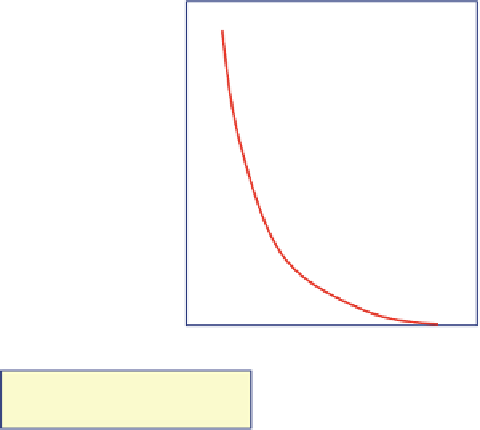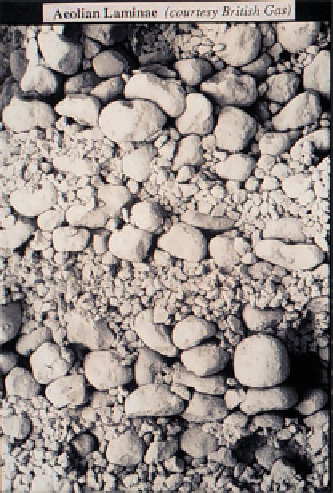Geoscience Reference
In-Depth Information
P
c
curve
7) Repeat for the
next pressure, etc.
1
1) Pick a
pressure
k
ro
2,3,4) Find
the k
rel
for
each phase
k
rw
0
0
1
S
w
5) Solve the Darcy
equations for each phase
6) Calculate effective
relative permeabilities
Fig. 4.9
Illustration of the capillary equilibrium steady-state upscaling method
is then repeated for a different fractional flow,
and so on. It is assumed that capillary pressure
and gravity have no effect. The method can be
assumed to apply for a Darcy-flow-dominated
two-phase flow system. The method is consid-
ered to be valid at larger length-scales, where
capillary forces can generally be neglected (e.g.
for model grid cell sizes greater than about 1 m
vertically).
For the capillary equilibrium steady state
assumption it is the Darcy flow effects that are
neglected and all fluxes are deemed to be con-
trolled by the capillary pressure curve. For a
given pressure, the saturation is known from the
P
c
curve and the local phase permeability is then
determined from the relative permeability
curves. The calculation is then repeated for
each chosen decrement of pressure until the sat-
uration range is covered (Fig.
4.9
). The method is
considered to be valid at smaller length-scales,
where capillary forces are likely to dominate
(e.g. at length-scales less than about 0.2 m).
There is also a rate-dependence for viscous and
capillary forces - higher flow rates favour vis-
cous forces while lower flow rates favour capil-
lary forces. Note that layering in sedimentary
rock media is often at
Fig. 4.10
SEM image of laminae in an aeolian sandstone
(Image courtesy of British Gas)
(Fig.
4.10
), and therefore capillary forces are
likely to be important at this length-scale.
The gravity-capillary equilibrium method
uses the same principle as the CE method
except that vertical pressure gradient is also
the mm to cm scale












